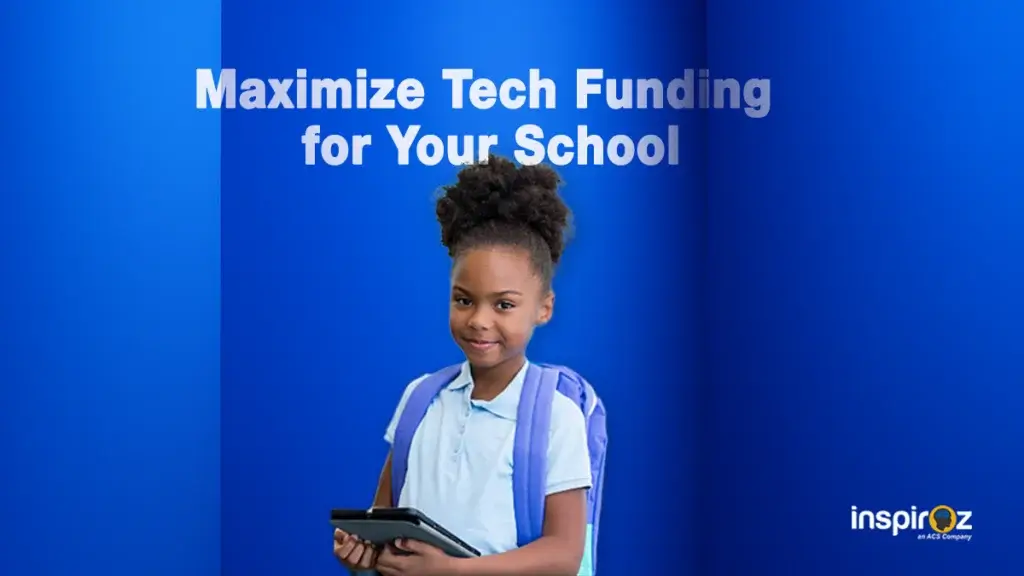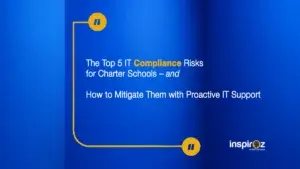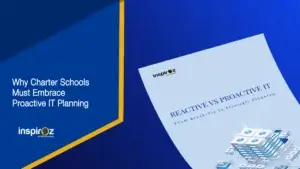What is E-Rate and Why Does It Matter for Charter Schools?
Established by the FCC in 1996, the E-Rate program helps eligible schools and libraries in the U.S. obtain affordable broadband and telecommunications services. Each year, billions of dollars in discounts are allocated through this federal initiative—yet too many charter schools miss out due to lack of awareness, resources, or support navigating the process.
Here’s the thing: technology is the backbone of modern education. Without strong IT support, students fall behind, teachers become frustrated, and operations suffer. E-Rate funding offers a powerful opportunity to build that backbone—if you know how to access it.
The best part? The program covers up to 90% of costs on critical services like:
- Internet access
- Internal connections (like Wi-Fi infrastructure)
- Network upgrades
- Firewalls and security
- Managed IT services (Category 2 support)
Imagine what your school could do with 80% of your tech costs covered. It’s a game changer.
Who Is Eligible for E-Rate Funding?
Most K12 educational institutions—including public, private, and charter schools—qualify for E-Rate funding. But eligibility is based on a few key factors:
- Nonprofit status: Charter schools must operate on a not-for-profit basis.
- Independent administration: The school must have its own budget and administration, separate from other organizations.
- Student population: Discounts are determined by the percentage of students eligible for the National School Lunch Program (NSLP).
Sounds pretty straightforward, right? But here’s where many schools hit a wall—navigating the actual application process.
Step-by-Step Guide to Navigating E-Rate for Charter Schools
Let’s break this down into bite-sized steps, so you can take action with clarity and confidence.
Step 1: Understand Your Tech Needs
Before you dive into forms and paperwork, assess your current IT environment:
- Is your Wi-Fi strong and stable in every classroom?
- Are your firewalls up-to-date?
- Do you have aging switches, routers, or access points?
- Are teachers and students dealing with downtime or device issues?
This step is critical because E-Rate is not just about funding—it’s about planning. Having a clear tech roadmap will ensure your funding requests are aligned with real needs, not just guesswork.
Pro Tip: Involve your IT support team or a trusted partner like Inspiroz to conduct a quick tech audit. This can highlight gaps and make your application more targeted.
Step 2: Get a BEN and Register with SAM.gov
Every school must obtain a Billed Entity Number (BEN) through the USAC (Universal Service Administrative Company). You’ll also need to register with the System for Award Management (SAM.gov) to receive federal funds.
These initial registrations can be tedious (not gonna lie), but they’re crucial for eligibility. Start early to avoid delays.
Step 3: File Form 470 – Open the Bidding Process
This is where you publicly request bids from vendors for your technology needs. Think of it as an RFP process. You’ll list the services or equipment you’re looking for and invite qualified providers to respond.
You must keep the bidding window open for at least 28 days. During this time, vendors will submit proposals. Transparency and fairness matter—a lot—so document everything.
Step 4: Evaluate Bids and Select a Vendor
Once the 28-day window closes, it’s decision time. Choose a vendor based on price as the primary factor, but also consider:
- Quality of service
- Support reputation
- Scalability
- Experience with E-Rate compliance
Many charter schools choose to work with MSPs (Managed Service Providers) that offer comprehensive IT support for schools, combining infrastructure, security, and monitoring into one seamless solution.
Step 5: File Form 471 – Request the Funding
Now that you’ve chosen your vendor(s), it’s time to request funding via Form 471. You’ll list every service, cost, and vendor you selected.
Accuracy is key here. A small mistake can delay or reduce your funding. Double-check every detail, or work with an E-Rate consultant (or Inspiroz) who knows the ins and outs.
Step 6: Respond to PIA Questions
After submitting Form 471, USAC may send you Program Integrity Assurance (PIA) questions to verify details.
Don’t panic! This is a normal part of the process. Just respond quickly and completely. Late or incomplete responses can sink your application.
Step 7: Receive Funding Commitment Decision Letter (FCDL)
If all goes well, you’ll receive your FCDL, which confirms the amount of funding approved. Congrats—you’re almost there!
Step 8: File Form 486 and Start Implementation
Now that funding is committed, file Form 486 to notify USAC that services have started and are in compliance with CIPA (Children’s Internet Protection Act).
From here, you or your vendor can begin implementing the upgrades. Whether it’s new routers, upgraded switches, or a full network refresh, this is when transformation begins.
Step 9: File Form 472 or 474 for Reimbursement
Once services are rendered and paid for, you can either:
- File Form 472 (BEAR form) to get reimbursed directly, or
- Have your vendor file Form 474 to discount your invoice upfront
Both methods work, just choose what fits your budget and timeline best.
Common Pitfalls—and How to Avoid Them
Navigating E-Rate isn’t always smooth sailing. Here are some things that trip up school leaders:
- Missing deadlines – These are strict and unforgiving. Set calendar alerts or use project management tools.
- Lack of documentation – Keep all quotes, emails, bid evaluations, and contracts organized.
- Poor planning – Don’t apply for what you don’t need. Align tech upgrades with long-term school goals.
- DIY approach – While noble, E-Rate paperwork is tricky. One small mistake can cost you thousands. Consider outsourcing to a partner who lives and breathes this stuff.
Why Partnering with Experts Like Inspiroz Matters
Let’s face it—charter school leaders wear a dozen hats, and navigating federal funding shouldn’t be one more stressor on your plate.
That’s where Inspiroz can make a real difference.
As a Managed Service Provider focused specifically on IT support for schools, Inspiroz has deep expertise in guiding K12 educational institutions through the E-Rate process—start to finish. From technology planning to vendor selection to compliance, Inspiroz acts as a true partner, helping schools unlock every dollar available and stretch it further.
More importantly, they understand what’s at stake: better learning experiences, more secure systems, and fewer headaches for your team.
Final Thoughts: Don’t Leave Money on the Table
If you’re still wondering whether E-Rate is worth the effort, let me be clear: it is. Every year, charter schools across the U.S. miss out on funding simply because they didn’t know how to apply—or were too busy to try.
But your students deserve better. Your teachers deserve the tools to succeed. And you deserve a tech environment that supports—not hinders—your mission.
With the right mindset, a bit of guidance, and the help of trusted experts like Inspiroz, you can unlock the full power of E-Rate funding and future-proof your school’s technology for years to come.
So go ahead, take the first step. Your school’s digital transformation is just one application away.
Need help getting started?
Visit www.inspiroz.com or reach out to our team to learn how we can help you make E-Rate simple, strategic, and successful.







